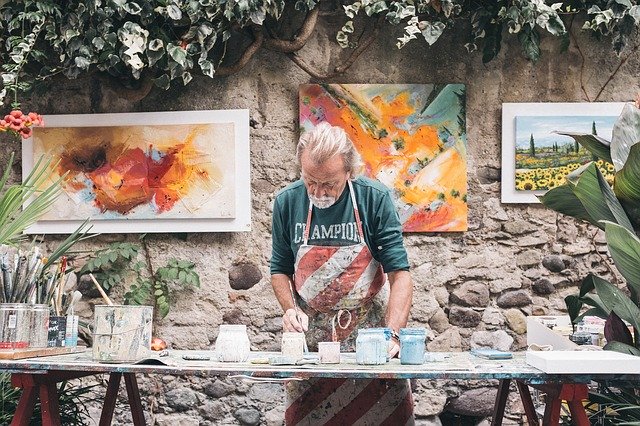Addiction to drugs and alcohol doesn’t just happen because a person really wanted that particular addictive substance. Often the substance is one way to cover up one or more psychological problems or past trauma.
Therefore, substance abuse recovery involves so much more than just the clearance of alcohol or drugs from the system.
Successfully overcoming the condition of addiction needs an understanding of how the addiction started, what are the motivating factors for recovery, and any potential reasons to hinder the healing process.
Art therapy can play a role here. Human minds have a tendency to imagine and wander with free associations when we start to create, and often we can even decipher the symbolism in each creation until we come back to it.

Art therapy serves as a vehicle for the psychological component of recovery by providing an emotional outlet and a means of self-expression. Feelings or experiences that are too shameful or painful to talk about can be expressed through paint, clay, ink or other media.
When combined with other recovery services, such as detox, individual therapy, support groups, and family counseling, art therapy can be a powerful way to promote the healing process.
According to the American Art Therapy Association (AATA), art therapy is a mental health modality that can help the individual in a variety of important ways:
- By resolving emotional conflicts
- By building self-esteem
- By encouraging self-awareness
- By reducing anxiety
- By developing social skills
A key objective for art therapy is to facilitate he patient to return to healthy functioning. This could be at different levels: emotional, cognitive or social, emotional.
The therapy may be especially beneficial in situation where the individuals going through the treatment had experienced a traumatic episode, such as childhood abuse, sexual assault, violence, or a natural disaster.
The visual media of art gives an opportunity to explore and release the tensions and fears around memories and experiences that are too powerful to confront directly. Creative activity makes room for the individual to regain a sense of control. In this sense, art can play the part of a coping mechanism to handle the challenges that come with the rehabilitation process.
At a personal level, art therapy can be a process that introduces the pleasures of creative activity and accomplishment.
On a social level, art sessions can act as a type of group therapy by forming bonds among the participants. As a group of individuals collaborate on guided projects, they can learn and appreciate new ways of coping, share their experiences with therapy, and practice the skills of teamwork.